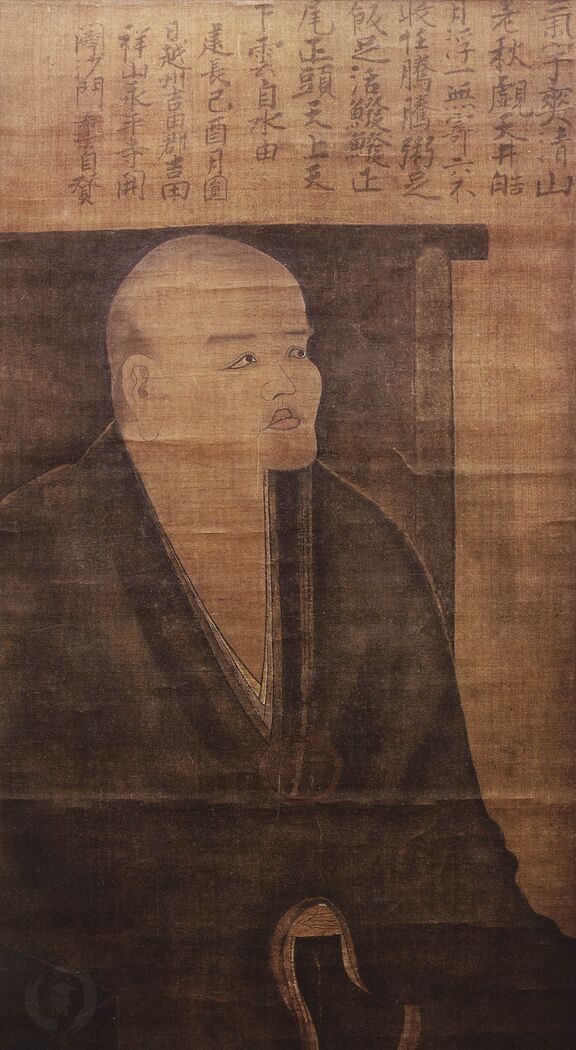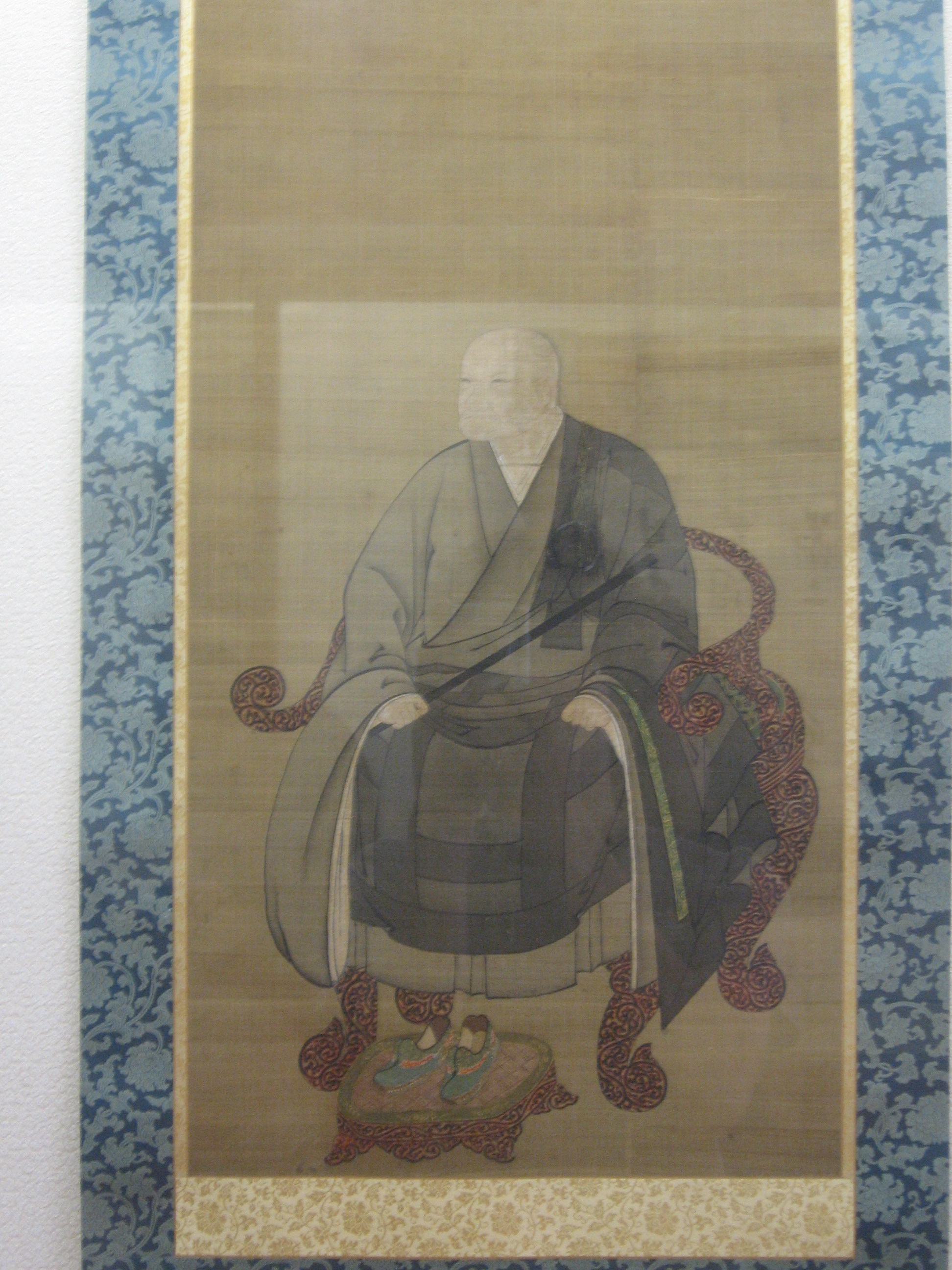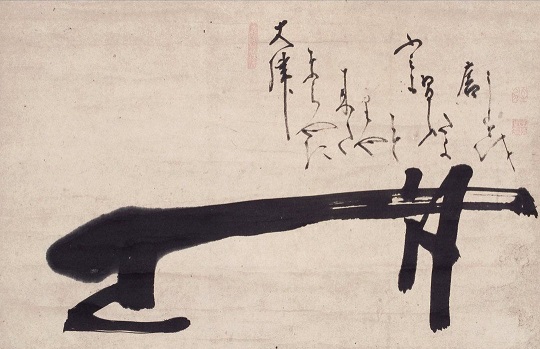|
Rujing
Tiāntóng Rújìng (天童如淨; Japanese: Tendō Nyojō) (1163-1228) was a Caodong Buddhist monk living in Qìngdé Temple (慶徳寺; Japanese: Keitoku-ji) on Tiāntóng Mountain (天童山; Japanese: Tendouzan) in Yinzhou District, Ningbo. He taught and gave dharma transmission to Sōtō Zen founder Dōgen as well as early Sōtō monk Jakuen (寂円 Jìyuán). His teacher was Xuedou Zhijian (雪竇智鑑, 1105–1192), who was the sixteenth-generation dharma descendant of Huineng Dajian Huineng (); (February 27, 638 – August 28, 713), also commonly known as the Sixth Patriarch or Sixth Ancestor of Chan ( traditional Chinese: 禪宗六祖), is a semi-legendary but central figure in the early history of Chinese Chan Budd .... According to Keizan, when Ruijing became a leader, he didn't put himself above the other monks. He wore the black surplice and robe of a monk. He was given a purple vestment of honor by the emperor of China, but he declined it. Even after reaching ... [...More Info...] [...Related Items...] OR: [Wikipedia] [Google] [Baidu] |
Dōgen
Dōgen Zenji (道元禅師; 26 January 1200 – 22 September 1253), also known as Dōgen Kigen (道元希玄), Eihei Dōgen (永平道元), Kōso Jōyō Daishi (高祖承陽大師), or Busshō Dentō Kokushi (仏性伝東国師), was a Japanese Buddhist priest, writer, poet, philosopher, and founder of the Sōtō school of Zen in Japan. Originally ordained as a monk in the Tendai School in Kyoto, he was ultimately dissatisfied with its teaching and traveled to China to seek out what he believed to be a more authentic Buddhism. He remained there for four years, finally training under Tiantong Rujing, an eminent teacher of the Caodong lineage of Chinese Chan. Upon his return to Japan, he began promoting the practice of zazen (sitting meditation) through literary works such as '' Fukanzazengi'' and '' Bendōwa''. He eventually broke relations completely with the powerful Tendai School, and, after several years of likely friction between himself and the establishmen ... [...More Info...] [...Related Items...] OR: [Wikipedia] [Google] [Baidu] |
Xuedou Zhijian
Xuedou Zhijian (; ), was a Chinese Zen Buddhist monk during the Song Dynasty. He was born in an ancient town called Chuzhou in what is now Anhui Province. The details of his life have not survived in great detail. In 1154, he is known to have become the abbot of Xizhen Temple near modern Hangzhou. He moved again in 1184 to Mount Xuedou, where he was said to have many students. In the years leading up to his death in 1192, he apparently lived in seclusion in a cottage to the east of his temple. According to the ''Conglin shengshi'' (Glorious matters from the monasteries), written in 1199 by Guyue Daorong, Zhijian wrote a popular verse that poked fun at the renowned teacher Hongzhi Zhengjue. The verse is: “Obtaining one Zong, losing one Chong; Joining his palms in front, beating his chest in back.” "Zong" refers to a well-known student of Hongzhi named Sizong, while "Puchong" is a reference to Yetang Puchong, a student who studied under Hongzhi, but later left to study under Caotan ... [...More Info...] [...Related Items...] OR: [Wikipedia] [Google] [Baidu] |
Jakuen
Jìyuán (寂円, 1207 – 8 October 1299), better known to Buddhist scholars by his Japanese name Jakuen, was a Chinese Zen Buddhist monk and a disciple of Rujing. Most of his life is known to us only through medieval hagiography, legends, and sectarian works. It is generally agreed, though, that during his time at Tiāntóng Mountain he befriended Dōgen who was also studying under Rujing. After Rujing's death in 1228, Jakuen immigrated to Japan in order to join his friend's emerging Sōtō school, but did not receive dharma transmission from Dōgen directly, rather his disciple Koun Ejō. Jakuen outlived Dōgen and became embroiled in the '' sandai sōron'', a dispute over orthodoxy and succession. In 1261 he left Eihei-ji, leaving the other monks to resolve the power struggle amongst themselves, but allegedly taking with him many treasures of Eihei-ji entrusted to him by Dōgen. He arrived on a remote mountain in Fukui prefecture, where he became famous to the locals ... [...More Info...] [...Related Items...] OR: [Wikipedia] [Google] [Baidu] |
Shikantaza
is Dogen's Japanese language, Japanese translation of the Chinese language, Chinese phrase ''zhǐguǎn dǎzuò'' (只管打坐 / 祇管 打坐), "just sitting." The phrase was used by his teacher Rujing, a monk of the Caodong school of Zen Buddhism, to refer to the Dhyana in Buddhism, meditation-practice called "Silent Illumination" (), or "Serene Reflection," taught by the Caodong master Hongzhi Zhengjue (1091-1157). In Japan, it is associated with the Soto school. In shikantaza one does not focus attention on a specific object (such as the breath); instead, practitioners "just sit" in a state of conscious awareness. Etymology The term ''shikantaza'' is the Kanji#On'yomi (Sino-Japanese reading), Sino-Japanese reading of ''Zhǐguǎn dǎzuò'' (只管打坐 / 祇管 打坐) "just sitting," "nothing but sitting," "meditation of just sitting," “just mind [yourself] sitting.” ''Zhǐguǎn dǎzuò'' (只管打坐 / 祇管打坐) translates as follows: * ''zhǐguǎn'' (只管, J. '' ... [...More Info...] [...Related Items...] OR: [Wikipedia] [Google] [Baidu] |
Dharma Transmission
In Chan and Zen Buddhism, dharma transmission is a custom in which a person is established as a "successor in an unbroken lineage of teachers and disciples, a spiritual 'bloodline' (''kechimyaku'') theoretically traced back to the Buddha himself."Haskel, 2 The dharma lineage reflects the importance of family-structures in ancient China, and forms a symbolic and ritual recreation of this system for the monastical "family". In Rinzai-Zen, ''inka shōmei'' is ideally "the formal recognition of Zen's deepest realisation", but practically it is being used for the transmission of the "true lineage" of the masters (''shike'') of the training halls. There are only about fifty to eighty of such ''inka shōmei''-bearers in Japan. In Sōtō-Zen, dharma transmission is referred to as ''shiho'', and further training is required to become an oshō. History The notion and practice of Dharma Transmission developed early in the history of Chan, as a means to gain credibility and to fos ... [...More Info...] [...Related Items...] OR: [Wikipedia] [Google] [Baidu] |
Yinzhou District, Ningbo
Yinzhou () is a district of the major city of Ningbo, Zhejiang province, China. History In 220 BC, Qin Shi Huang, the first emperor of the Qin dynasty, established three counties called Yin (), Mao () and Gouzhang (). Later they were merged into Gouzhang county during the Sui dynasty. It was renamed Mao county during the Tang dynasty. It had assumed its current name of "Yin" in the Five Dynasties and Ten Kingdoms period. The city of Ningbo was administrated by Yin county until after the establishment of the People's Republic of China. At the same time, Yin county became a county of Ningbo city. On April 19, 2002, it was renamed Yinzhou District. It is one of the few counties that has kept the same name since its establishment more than 2000 years ago. Administrative divisions Subdistricts: * Shounan Subdistrict (), Meixu Subdistrict (), Shiqi Subdistrict (), Xiaying Subdistrict (), Zhonggongmiao Subdistrict (), Zhonghe Subdistrict () Towns: * Dongqianhu (), Dongqiao () ... [...More Info...] [...Related Items...] OR: [Wikipedia] [Google] [Baidu] |
Sōtō
Sōtō Zen or is the largest of the three traditional sects of Zen in Japanese Buddhism (the others being Rinzai and Ōbaku). It is the Japanese line of the Chinese Cáodòng school, which was founded during the Tang dynasty by Dòngshān Liánjiè. It emphasizes Shikantaza, meditation with no objects, anchors, or content. The meditator strives to be aware of the stream of thoughts, allowing them to arise and pass away without interference. The Japanese brand of the sect was imported in the 13th century by Dōgen Zenji, who studied Cáodòng Buddhism () abroad in China. Dōgen is remembered today as the co-patriarch of Sōtō Zen in Japan along with Keizan Jōkin. With about 14,000 temples, Sōtō is one of the largest Japanese Buddhist organizations. Sōtō Zen is now also popular in the West, and in 1996 priests of the Sōtō Zen tradition formed the Soto Zen Buddhist Association based in North America. History Chinese origins The original Chinese version of Sōt ... [...More Info...] [...Related Items...] OR: [Wikipedia] [Google] [Baidu] |
Caodong
Caodong school () is a Chinese Chan Buddhist sect and one of the Five Houses of Chán. Etymology The key figure in the Caodong school was founder Dongshan Liangjie (807-869, 洞山良价 or Jpn. Tozan Ryokai). Some attribute the name "Cáodòng" as a union of "Dongshan" and "Caoshan", the latter from one of Dongshan's Dharma-heirs, Caoshan Benji (曹山本寂); (840-901, Ts'ao-shan Pen-chi, Jpn. Sōzan Honjaku). However, the "Cao" much more likely came from ''Cáoxī'' (曹溪), the "mountain-name" of Huineng, the Sixth Ancestor of Chan, as Caoshan was of little importance unlike his contemporary and fellow Dharma-heir, Yunju Daoying. The school emphasised sitting meditation, and later " silent illumination" techniques. History The Caodong school was founded by Dongshan Liangjie and his Dharma-heir Caoshan Benji. Dongshan traced back his lineage to Shitou Xiqian (700-790), a contemporary of Mazu Daoyi (709–788). Sayings to the effect that Shitou and Mazu were the two great ... [...More Info...] [...Related Items...] OR: [Wikipedia] [Google] [Baidu] |
Sōtō Zen
Sōtō Zen or is the largest of the three traditional sects of Zen in Japanese Buddhism (the others being Rinzai and Ōbaku). It is the Japanese line of the Chinese Cáodòng school, which was founded during the Tang dynasty by Dòngshān Liánjiè. It emphasizes Shikantaza, meditation with no objects, anchors, or content. The meditator strives to be aware of the stream of thoughts, allowing them to arise and pass away without interference. The Japanese brand of the sect was imported in the 13th century by Dōgen Zenji, who studied Cáodòng Buddhism () abroad in China. Dōgen is remembered today as the co-patriarch of Sōtō Zen in Japan along with Keizan Jōkin. With about 14,000 temples, Sōtō is one of the largest Japanese Buddhist organizations. Sōtō Zen is now also popular in the West, and in 1996 priests of the Sōtō Zen tradition formed the Soto Zen Buddhist Association based in North America. History Chinese origins The original Chinese version of Sōtō ... [...More Info...] [...Related Items...] OR: [Wikipedia] [Google] [Baidu] |
Chan Patriarchs
Chan may refer to: Places *Chan (commune), Cambodia * Chan Lake, by Chan Lake Territorial Park in Northwest Territories, Canada People *Chan (surname), romanization of various Chinese surnames (including 陳, 曾, 詹, 戰, and 田) * Chan Caldwell (1920–2000), Canadian football coach *Chan Gailey (born 1952), American football coach *Chan Kai-kit (born 1952), Macanese businessman *Chan Reec Madut, South Sudanese jurist * Chan Romero (born 1941), American rock and roll singer, songwriter, and musicians *Chan Santokhi (born 1959), President of Suriname and former chief of police * Bang Chan (born 1997), member of the South Korean boy band Stray Kids *Heo Chan (born 1995), member of the South Korean boy band Victon *Ta Chan, nom de guerre of Cambodian war criminal Mam Nai Computing and media *chan-, an abbreviation for channels in Internet Relay Chat (IRC) *chan, a common suffix for the title of an imageboard CHAN *African Nations Championship or ''Championnat d'Afrique des Nat ... [...More Info...] [...Related Items...] OR: [Wikipedia] [Google] [Baidu] |
Keizan
Keizan Jōkin (, 1268–1325), also known as Taiso Jōsai Daishi, is considered to be the second great founder of the Sōtō school of Zen in Japan. While Dōgen, as founder of Japanese Sōtō, is known as , Keizan is often referred to as . Keizan and his disciples are credited with beginning the spread of Sōtō Zen throughout Japan, away from the cloistered monastic practice characteristic of Dōgen's Eihei-ji and towards a more popular religion that appealed to all levels of Japanese society. Keizan founded several temples during his lifetime, most notably Yōkō-ji and Daihonzan Sōji-ji (founded on the Noto Peninsula and moved to Tsurumi-ku, Yokohama in 1911). Today Sōji-ji and Eihei-ji stand together as the two principal Sōtō Zen training centers in Japan. Biography Youth and Zen-training Keizan spent the first eight years growing up under the care of his grandmother, Myōchi, who was one of Great Master Dōgen's first supporters on his return from China. Keizan always ... [...More Info...] [...Related Items...] OR: [Wikipedia] [Google] [Baidu] |
Huineng
Dajian Huineng (); (February 27, 638 – August 28, 713), also commonly known as the Sixth Patriarch or Sixth Ancestor of Chan ( traditional Chinese: 禪宗六祖), is a semi-legendary but central figure in the early history of Chinese Chan Buddhism. According to tradition he was an uneducated layman who suddenly attained awakening upon hearing the Diamond Sutra. Despite his lack of formal training, he demonstrated his understanding to the fifth patriarch, Daman Hongren, who then supposedly chose Huineng as his true successor instead of his publicly known selection of Yuquan Shenxiu. Twentieth century scholarship revealed that the story of Huineng's Buddhist career was likely invented by the monk Heze Shenhui, who claimed to be one of Huineng's disciples and was highly critical of Shenxiu's teaching. Huineng is regarded as the founder of the "Sudden Enlightenment" Southern Chan school of Buddhism, which focuses on an immediate and direct attainment of Buddhist enlightenment. ... [...More Info...] [...Related Items...] OR: [Wikipedia] [Google] [Baidu] |






